Explore Bulawayo - Zimbabwe Travel, Africa
Strategically located in the southwestern part of the country, Bulawayo, or the “City of Kings,” serves as a gateway to some of Zimbabwe's most treasured sites, including the Matobo National Park and Khami Ruins, both are UNESCO World Heritage Sites. Known for its rich history and cultural significance, Bulawayo invites travelers to explore its storied past and vibrant present. With its easy accessibility and an array of attractions, Bulawayo is a must-visit for those wanting to immerse themselves in Zimbabwean culture.
Population: Approximately 660,000 in 2022.
Economy: Bulawayo's economy is diverse, with key sectors including manufacturing, trade, and agriculture. The city is known for its industrial base and vibrant small businesses, contributing to its economic growth.
Landmarks: Famous for the Matobo National Park, Khami Ruins, and Bulawayo Railway Museum.
Zimbabwe
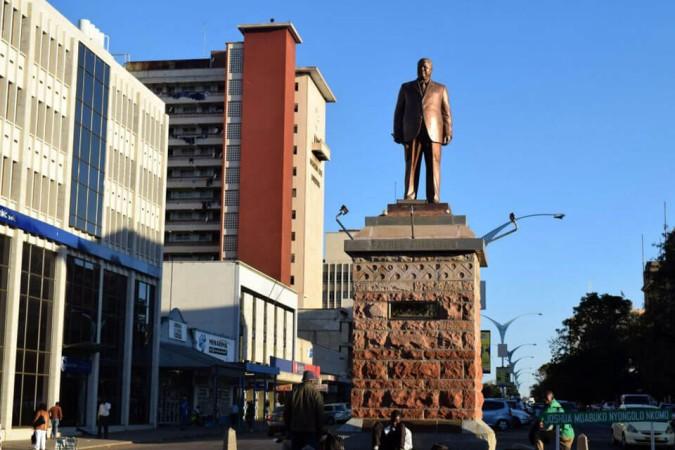
Overview of Bulawayo
History & Cultural Influence
Bulawayo boasts a fascinating history that dates back centuries, shaped by the Ndebele Kingdom, colonial influences, and Zimbabwe’s independence. Founded by King Lobengula in the 19th century, Bulawayo was once the capital of the Ndebele people, and its heritage remains an integral part of the city’s identity. Visitors can see this history come to life through the preserved colonial-era architecture and the industrial heritage of the city. Culturally, Bulawayo’s cultural identity is further celebrated in its lively art scene, with galleries showcasing works from local artisans and craftsmen. The city's streets are filled with sculptures, paintings, and murals that reflect its creative spirit and cultural pride.
Interaction with The Locals
Bulawayo is Zimbabwe's second-largest city, with the majority of the population belonging to the Ndebele ethnic group, though the city is also home to a mix of other ethnicities and cultures. Citizens of Bulawayo are known for their warm hospitality, strong community ties, and rich cultural heritage. English, Ndebele, and Shona are commonly spoken languages, reflecting the city's diversity. The people of Bulawayo are proud of their history and traditions, with a strong emphasis on arts, crafts, and community festivals.
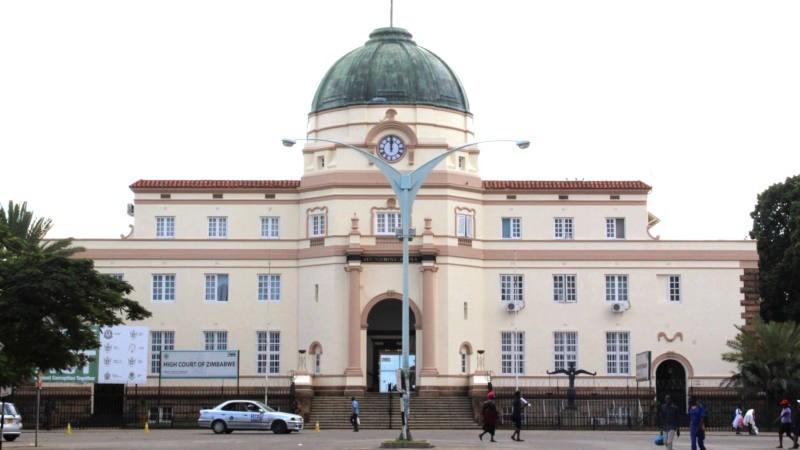
Bulawayo Town Hall - © Bulawayo Publicity Association
Top Attractions in Bulawayo
Bulawayo is home to some of Zimbabwe’s most captivating attractions, combining natural beauty, ancient history, and cultural landmarks. With a variety of must-visit sites, Bulawayo is a destination that promises adventure and discovery at every turn.
- Matobo National Park: Known for its stunning granite hills and balancing rocks, Matobo is a UNESCO World Heritage Site. It also has important rock art made by the San people over thousands of years. Visitors can enjoy hiking, wildlife viewing, and guided tours to see historical sites such as Cecil Rhodes’ grave.
- Khami Ruins: Just outside Bulawayo, this ancient city was once the capital of the Kingdom of Butua and is now a UNESCO World Heritage Site. Explore the stone walls, terraces, and towers that date back to the 15th century, offering a glimpse into Zimbabwe’s ancient civilizations.
- Bulawayo Railway Museum: A must for history enthusiasts, this museum showcases the city’s colonial past through an impressive collection of steam engines and railway memorabilia. Learn about Bulawayo's important position in southern Africa's transportation network.
- National Art Gallery: Located in the heart of Bulawayo, the gallery features contemporary Zimbabwean art, including works from both established and emerging artists. This is a great spot to appreciate local talent and purchase unique pieces.
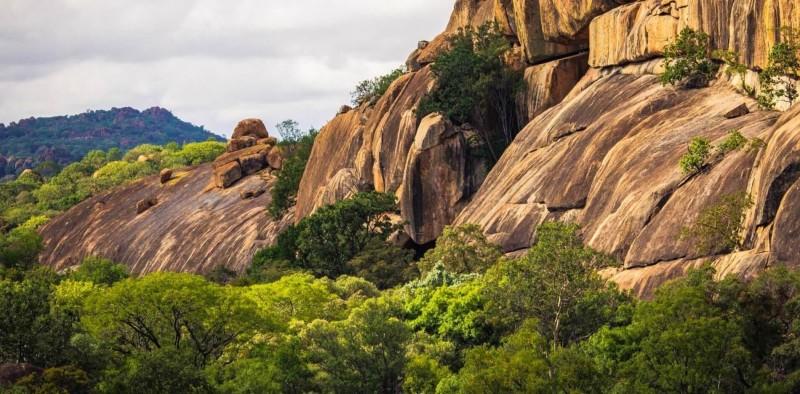
Matobo National Park - © Mzala Tom
Must-Try Dishes in Bulawayo
From hearty meat dishes to adventurous local snacks, Bulawayo's culinary tradition offers a delicious exploration of Zimbabwean traditions. Whether you're trying Sadza with game meat or sampling some Nyama, there's something for every palate.
- Sadza: A quintessential Zimbabwean staple, sadza is a thick porridge made from maize meal. It’s served with a variety of accompaniments such as beef stew, muriwo (leafy vegetables), or nyama. In Bulawayo, you can experience variations like Sadza Madora (served with mopane worms) or Sadza Mazondo (cow heels).
- Nyama (Grilled Meat): Known for its flavorful meat dishes, Bulawayo is home to a variety of grilled or stewed meats, commonly referred to as nyama. The local braai (barbecue) culture is strong, where you can savor grilled beef, goat meat, or chicken seasoned with Zimbabwean spices. Street vendors and markets are great places to find fresh, smoky nyama.
- Ulusu: Also known as tripe, this dish features the stomach lining of cows or goats, slow-cooked and often served with sadza. It is a popular traditional dish in Bulawayo, loved for its rich flavor and unique texture.
- Umxhanxa: A sweet and simple traditional dessert, Umxhanxa is made from boiled pumpkin and maize, sweetened to taste. This wholesome treat is a favorite among locals, especially during the harvest season.
- Bota: A breakfast porridge made from sorghum or maize meal, bota is often served with a side of peanut butter or honey for added flavor. It’s a warm, comforting start to the day, widely enjoyed across Zimbabwe, including Bulawayo.
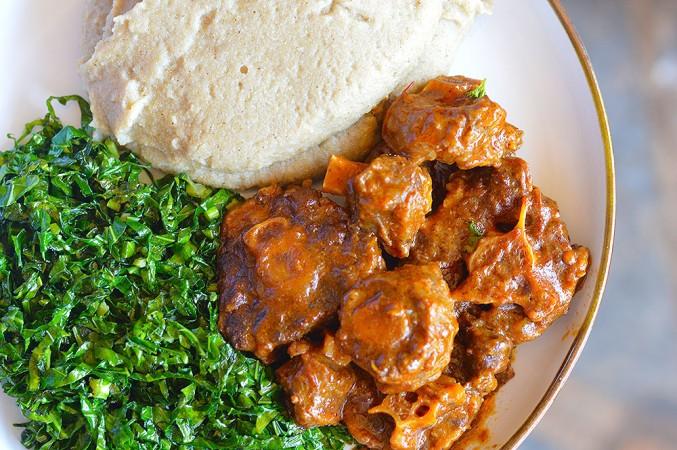
Sadza - © ZimboKitchen
Festivals & Local Celebrations
Bulawayo’s festivals and local celebrations offer an incredible window into the city’s vibrant culture, arts, and traditions. These celebrations offer travelers a chance to immerse themselves in local customs and creative expressions, making any visit to Bulawayo a truly enriching journey.
Intwasa Arts Festival
Held annually in September, the Intwasa Arts Festival is one of Zimbabwe’s largest and most important cultural events. This multi-disciplinary arts festival showcases the talents of local and international artists in various forms, including theater, dance, music, poetry, and visual arts. It offers visitors an opportunity to experience the creative heartbeat of Bulawayo, with performances and workshops held at different venues across the city. The festival promotes artistic expression and cultural exchange, while celebrating Bulawayo’s role as a cultural hub in Zimbabwe.
Umthwentwe (Traditional Ndebele Ceremony)
Umthwentwe is an annual celebration that honors the Ndebele culture and heritage. This ceremony typically involves traditional dances, songs, and rituals that are passed down through generations. Locals dress in vibrant traditional attire, and visitors are welcome to participate in the festivities. The event not only preserves the cultural identity of the Ndebele people but also fosters a sense of community and unity. It’s a fantastic opportunity for tourists to witness authentic Ndebele customs, as well as to engage with the local population in a meaningful way.
Makokoba Heritage Festival
Celebrating one of Bulawayo’s oldest neighborhoods, the Makokoba Heritage Festival is a community-driven event that highlights the cultural heritage and history of Makokoba Township. The festival includes street parades, storytelling, music, and art displays that reflect the neighborhood’s vibrant spirit. Visitors can experience local traditions up close and interact with the community through workshops and exhibitions. It’s a celebration of Bulawayo’s roots and the resilience of its people.
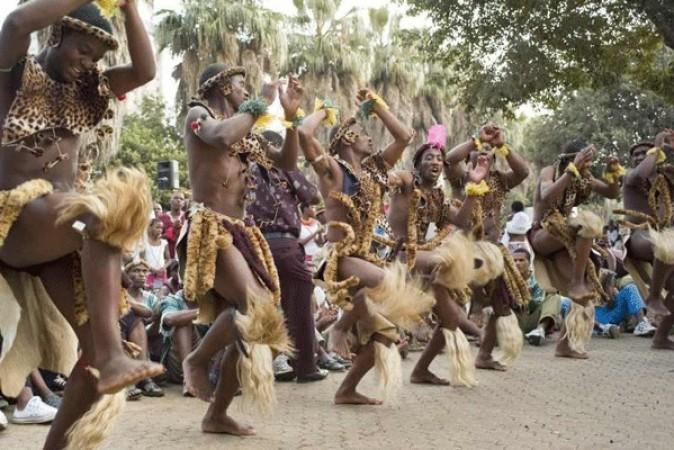
Umthwentwe (Traditional Ndebele Ceremony) - © AVAC Arts
What to Do in Bulawayo
- Wildlife Safari Tours: Take a day trip to Matobo National Park for game drives, where you can spot white rhinos, giraffes, leopards, and over 300 bird species. It’s an ideal destination for nature enthusiasts, offering walking safaris and scenic hikes among the park’s famous granite hills.
- Visit Cultural Village: Gain a deeper understanding of Zimbabwean rural life by visiting traditional Ndebele villages near Bulawayo. These tours allow you to learn about the customs, daily routines, and rich heritage of the local people.
- Historical Tours: Explore Khami Ruins and learn about Zimbabwe’s pre-colonial history with guided tours that explain the significance of this UNESCO World Heritage Site. The impressive stone structures and breathtaking views make it a highlight of any Bulawayo itinerary.
- Art and Museum Tours: Take a leisurely tour of Bulawayo’s National Art Gallery and Natural History Museum, where you can dive deep into the city’s cultural and scientific heritage. Both locations offer curated exhibits that showcase the best of Zimbabwean art and natural history.
Shopping in Bulawayo
Shopping in Bulawayo is not only an opportunity to take home unique Zimbabwean items, but it’s also a way to engage with the local culture and support the vibrant artisan community.
- Bulawayo City Market: For an authentic shopping experience, visit the bustling Bulawayo City Market, where you can buy traditional Zimbabwean crafts like pottery, woven baskets, beadwork, and fabrics. This market is a great place to find locally made items while supporting artisans and small businesses.
- Elephant’s Walk Village: This artisan hub features shops selling fine crafts, art, and jewelry made by Zimbabwean artists. Whether you're after unique sculptures or hand-painted textiles, Elephant’s Walk is a must-stop for quality souvenirs.
- Mhlahlandlela Shopping Centre: For those looking for a more modern shopping experience, Mhlahlandlela Centre offers a mix of local boutiques and retail shops. You can find fashion, electronics, and a range of other goods while exploring the city's urban shopping district.
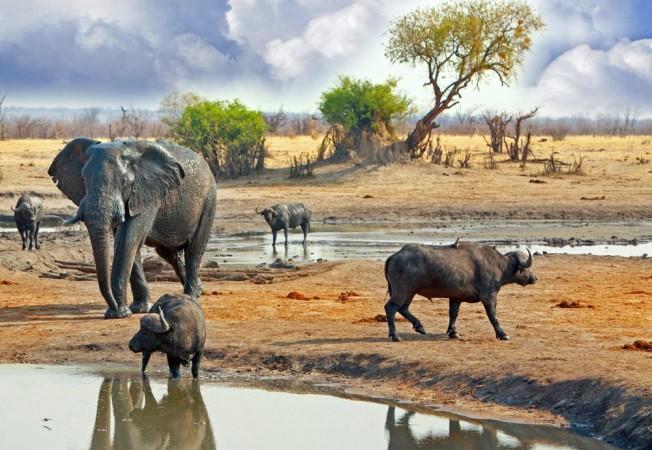
Wildlife Safari Tours in Matobo National Park - © Masai Mara Migration Safaris
Weather in Bulawayo: Best Time to Visit
Bulawayo has a subtropical highland climate marked by warm, dry winters and pleasant, rainy summers. Understanding Bulawayo’s weather helps ensure a pleasant and well-planned visit, allowing you to enjoy everything the city has to offer in comfort.
Wet Season in Bulawayo
Summers in Bulawayo are generally warm and wet. Temperatures range from 20°C to 30°C (68°F to 86°F), with occasional heavy rains that provide relief from the heat. This is an excellent time to see the lush landscapes and colorful foliage caused by the rainfall. However, be prepared for brief thunderstorms and occasional humidity.
Dry Season in Bulawayo
Winters are mild and dry, with temperatures ranging from 10°C to 25°C (50°F to 77°F). Nights can be quite cool, so packing warm layers is advisable. The dry season offers clear skies and pleasant weather, ideal for outdoor activities and sightseeing. This is the peak tourist season due to the comfortable temperatures and low humidity.
Best Time to Visit
The best time to visit Bulawayo is during the dry season months (April to October) when the weather is cooler and more comfortable for exploring outdoor attractions. The wet season months offer a different experience with lush landscapes but come with higher humidity and occasional rains.
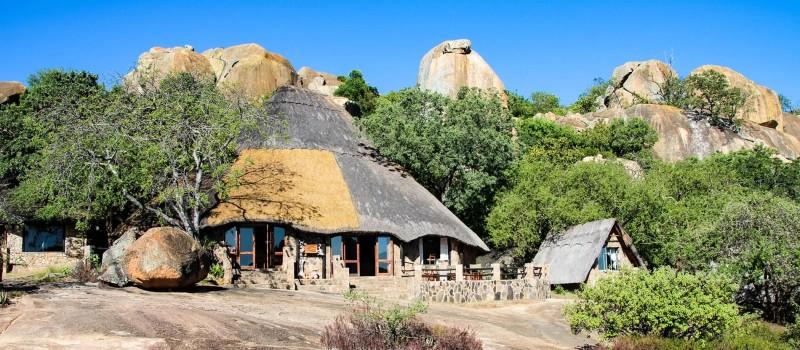
Enjoy eco-lodging in Matobo National Park - © Facts.net
Essential Travel Information
Getting Around Bulawayo
- Taxis and Ride-Sharing: Taxis are widely available throughout the city. It’s advisable to use reputable taxi services or ride-sharing apps like Uber for safety and convenience.
- Public Buses: Bulawayo has a network of public buses that connect different parts of the city and surrounding areas. Although economical, buses can be crowded and may not always adhere to strict schedules.
- Private Car Rentals: Renting a car offers flexibility and convenience, particularly for exploring attractions outside the city. Several rental agencies operate in Bulawayo, providing a range of vehicles for self-drive exploration.
- Bicycle Rentals: For a more leisurely way to explore the city, consider renting a bicycle. It’s a great way to see Bulawayo at a relaxed pace and navigate through the city’s parks and local neighborhoods.
- Walking: Many of Bulawayo’s key attractions are within walking distance of each other, especially in the city center. Walking is a wonderful way to explore your surroundings and engage with the local people.
ATM & Banking Services
With reliable banking and ATM services in Zimbabwe, you can easily handle your financial needs while exploring Bulawayo. ATMs are commonly found at major shopping centers, hotels, and public areas, accepting international cards for cash withdrawals. It’s advisable to inform your bank about your travel plans to ensure smooth transactions. Although the Zimbabwean Dollar is the native currency, US dollars are frequently accepted in many places. Currency exchange services are accessible in a variety of venues, including airports, banks, and exchange offices.
Where to Stay in Bulawayo
- Luxury Hotels: For a high-end experience, opt for luxury hotels that provide modern amenities such as comfortable rooms, fine dining, and exceptional service. These establishments offer a premium stay with a focus on comfort and elegance.
- Mid-Range Hotels: If you’re looking for a balance between comfort and cost, mid-range hotels offer essential amenities at a reasonable price. These hotels typically include services such as Wi-Fi, on-site dining, and convenient locations.
- Budget Lodgings: Budget travelers will find guesthouses and hostels that offer affordable rates while still providing essential comforts. These options are great for those seeking a cost-effective stay without sacrificing basic amenities.
- Unique Stays: For a distinctive experience, consider locally owned lodges or eco-friendly retreats. These options often offer a more immersive experience and the opportunity to engage with local communities.
Articles for you

Experience Aboard The RV Indochine II - A Mekong Cruise With Tweet World Travel
The RV Indochine II is a luxury river cruise ship, offering an unforgettable journey through many attractions along the Mekong River. Built in 2017, this upscale vessel combines colonial elegance with modern conveniences to create a comfortable yet stylish environment for its crew and passengers. The ship’s intimate size makes it ideal for those seeking a more personal cruising experience while exploring Vietnam and Cambodia rich culture, scenery, and heritage. Whether you're gazing at the landscape from your private balcony or enjoying authentic local cuisine, RV Indochine II promises an exotic adventure like no other.

Witness Stilt Fishing In Sri Lanka: An Eco-Tourism Experience
Sri Lanka, renowned for its stunning beaches and rich cultural heritage, harbors a unique tradition that has captivated travelers for centuries: stilt fishing. This ancient practice, passed down through generations of coastal communities, blends artistry with necessity, offering a glimpse into a way of life intimately connected to the island's coastal rhythms. Stilt fishing in Sri Lanka isn't merely a means to catch fish; it's a cultural emblem, embodying the resilience and ingenuity of Sri Lanka's fishing communities.

Make Your Trip Stress-Free With The Tweet Trip App
Embark on your next adventure with confidence by downloading the Tweet Trip App, available for both iOS and Android. This essential travel companion allows you to view your detailed itinerary, stay connected with your tour guide and fellow travelers, receive real-time updates, and provide feedback effortlessly. With features like in-app messaging, emergency assistance, and location sharing, the Tweet Trip App ensures you travel smarter, stay connected, and enjoy a seamless, worry-free journey. Get started today and make the most of your travel experience with Tweet World Travel.

Pedal Through Paradise: Unveiling Cambodia's Hidden Gems on Two Wheels
The gentle whir of bicycle wheels mingles with the distant chants of monks as you glide past emerald rice paddies stretching to the horizon. This is Cambodia - a sensory explosion waiting to be experienced on two wheels. At Tweet Tours, we believe there's no better way to immerse yourself in the Kingdom of Wonder than by bicycle.
Cambodia isn't just a destination; it's a living, breathing tapestry of ancient wonders, natural beauty, and vibrant culture. Our carefully crafted cycling tours take you beyond the typical tourist haunts, offering a unique perspective on this captivating country. Ready to clip in and discover the magic of Cambodia? Let's ride!

Trekking in the Himalayas: A Journey Through Nepal's Majestic Peaks
The Himalayas rise from the earth like colossal guardians, their snow-capped peaks piercing the sky in a display of nature's raw power and beauty. Nepal, nestled at the heart of this mountain range, serves as the gateway to some of the most breathtaking trekking experiences on the planet. Here, the air is crisp and thin, filled with the promise of adventure and the whispers of ancient tales.
With Tweet Tours, as you set foot on these hallowed trails, you're not just a traveler - you're a modern-day explorer, following in the footsteps of legendary mountaineers and age-old traders. Each step takes you further into a world where nature reigns supreme and human resilience is tested against the backdrop of some of the world's highest peaks.
From the moment your boots touch the ground in Kathmandu, you'll feel the pull of the mountains. The bustling streets of the capital, with their sensory overload of sights, sounds, and smells, soon give way to serene mountain paths where the only soundtrack is the crunch of gravel underfoot and the distant tinkling of yak bells.

Exploring Mui Ne's Wonders: Unique Attractions & Local Dishes
Nestled along the southeastern coast of Vietnam, Mui Ne emerges as a captivating gem, blending natural wonders with cultural richness. Renowned for its stunning landscapes and unique attractions, Mui Ne beckons travelers seeking both relaxation and adventure in equal measure. Mui Ne's renowned beach dunes, bustling fishing towns, and excellent local food await exploration at every turn.
The allure of Mui Ne lies not only in its pristine beaches and crystal-clear waters but also in its diverse range of activities catering to every traveler's whims. Whether you're drawn to thrilling water sports like kitesurfing and windsurfing on its dynamic shores or seeking tranquility amidst the picturesque Fairy Stream, Mui Ne promises an unforgettable journey filled with discovery.
